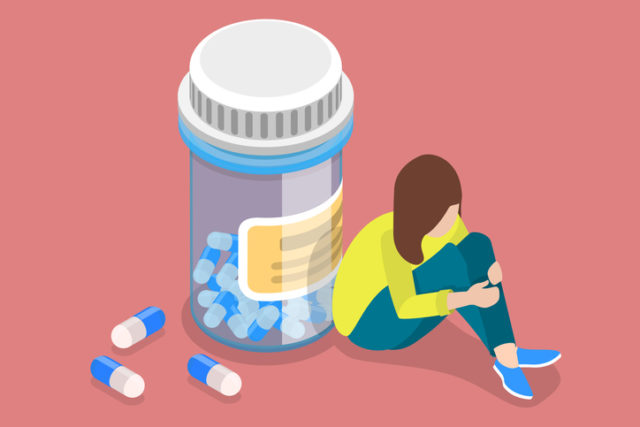
The collective trauma and widespread social isolation caused by the Covid-19 pandemic have long-term effects still not fully understood. However, a recent survey points to an increase in substance use and mental health concerns as a result of the pandemic. In addition to the physical toll these disorders take on individuals, there are serious implications on one’s quality of life. Among them is the ability to earn a living.
More than one-third of workers struggling with addiction or substance use issues say it has affected their work more since the pandemic began, resulting in loss of income and financial security. Yet, many people are afraid to ask their healthcare providers for help, or they think they don’t have a problem serious enough for a rehabilitation program. As a result, they suffer in silence as their health deteriorates.
At the same time, the pandemic compelled most of us to step deeper into a virtual world. This change presents an opportunity to consider all avenues of care, including online support for substance use. According to the National Survey on Drug Use and Health, of the 19 million adults who needed substance use care in 2016, only 10.8% received support. It’s time to recognize the virtual delivery of substance use disorder support programs as digital healthcare and to accommodate anyone who needs it.
Online Support for Substance use Broadens Access to Healing
Contrary to the prevailing belief that substance use support must be received onsite in a residential clinical setting, remote resources for substance use support are available and have demonstrated outstanding results.
Although in-person therapies have long been the model of care, those suffering from substance use disorder, a disease that causes physical changes to the brain and thus changes behavior, experience many barriers to care. Perhaps the most traditional substance use support is residential rehab, an approach by which an individual must step out of their life for 30-90 days and remain onsite at a clinic for the duration of their recovery. While this option works for many, it is unfortunately out of reach for most people experiencing substance use.
Although nearly 1 in 10 American adults have a perceived need for substance use support, just 11% of those who need it actually get the help they need. This alarming statistic doesn’t necessarily signal a lack of motivation among substance use disorder sufferers. When asked why support was not sought, a lack of health insurance or the inability to afford the high cost as the primary barrier to receiving help for substance use is often cited. This suggests that the more common inpatient modalities of treating sufferers are inaccessible for most people.
With the majority of those who suffer not receiving the proper care they need, it’s time to advocate for more cost-effective and convenient care options. Virtual support modalities are a piece of the puzzle. Remote resources for substance use may augment traditional onsite options as well as provide guidance for those who lack access to traditional support or seek a more personal, self-help recovery solution.
Barriers to Care Minimized through Virtual Support
There are numerous reasons individuals with a perceived need for substance use disorder treatment do not seek care. They may not be ready or are physically unable to give up the addictive substance. Before submitting to an onsite program, the facilities often require abstinence. This becomes a chicken or the egg situation, and for some, an insurmountable obstacle. How does one become free of the addictive substance before they are encouraged to seek support to kick the habit?
Many barriers to substance use support services, such as abstinence prior to receiving help, are not a requirement for most virtual options. There are numerous other motivating factors for obtaining services online, including:
- Expense: Traditional onsite facilities and outpatient services are expensive. Unfortunately, even for those with health insurance, the out-of-pocket expense may be unaffordable.
Substance use disorder virtual recovery support is cost-effective and provides actionable strategies to embark on the road of sobriety.
- Time Commitment: Considering that 30-90 days are required for recovery at a residential center, it can be intimidating to embark on such a program. Requesting time off work and managing other commitments with family and children may be particularly difficult when one is struggling with substance use, yet still desperate to find a way out.
Online support provides an alternative. Substance use care provided online does not require an individual to put their life on “pause.” Instead, those experiencing substance use disorder are given the tools to make productive headway towards recovery – today.
- Shame: Many individuals suffering from substance use disorder experience self-induced shame or perceive shame cast on them by others. Until such underlying emotional disturbances are addressed and managed the substance use therapies are unlikely to be effective.
Online modalities can be accessed from the comfort of an individual’s home. There is no need to stay inpatient or publicly disclose personal details in group meetings. Feelings of shame, guilt, and disappointment can be addressed in the private arena, thus promoting healthier and long-lasting change.
Substance use Support in a Virtual World is not only Possible – it Works
Online support provides an additional avenue to help heal those struggling with substance use disorder. Online care doesn’t require the participant to leave work, family, and commitments to enter a rehab facility for weeks on end. In fact, virtual guidance is tailored around an individual’s life and yields great success to help defeat substance use.
Substance use support delivered virtually is accessible, cost-effective, and allows anyone struggling with substance use disorder to incorporate life-changing cognitive-behavioral tools into their daily habits. It’s time to incorporate innovative remote resources to help the 20-million Americans in need of care for substance use get on the path to recovery and long-term sobriety.
Photo: TarikVision, Getty Images








